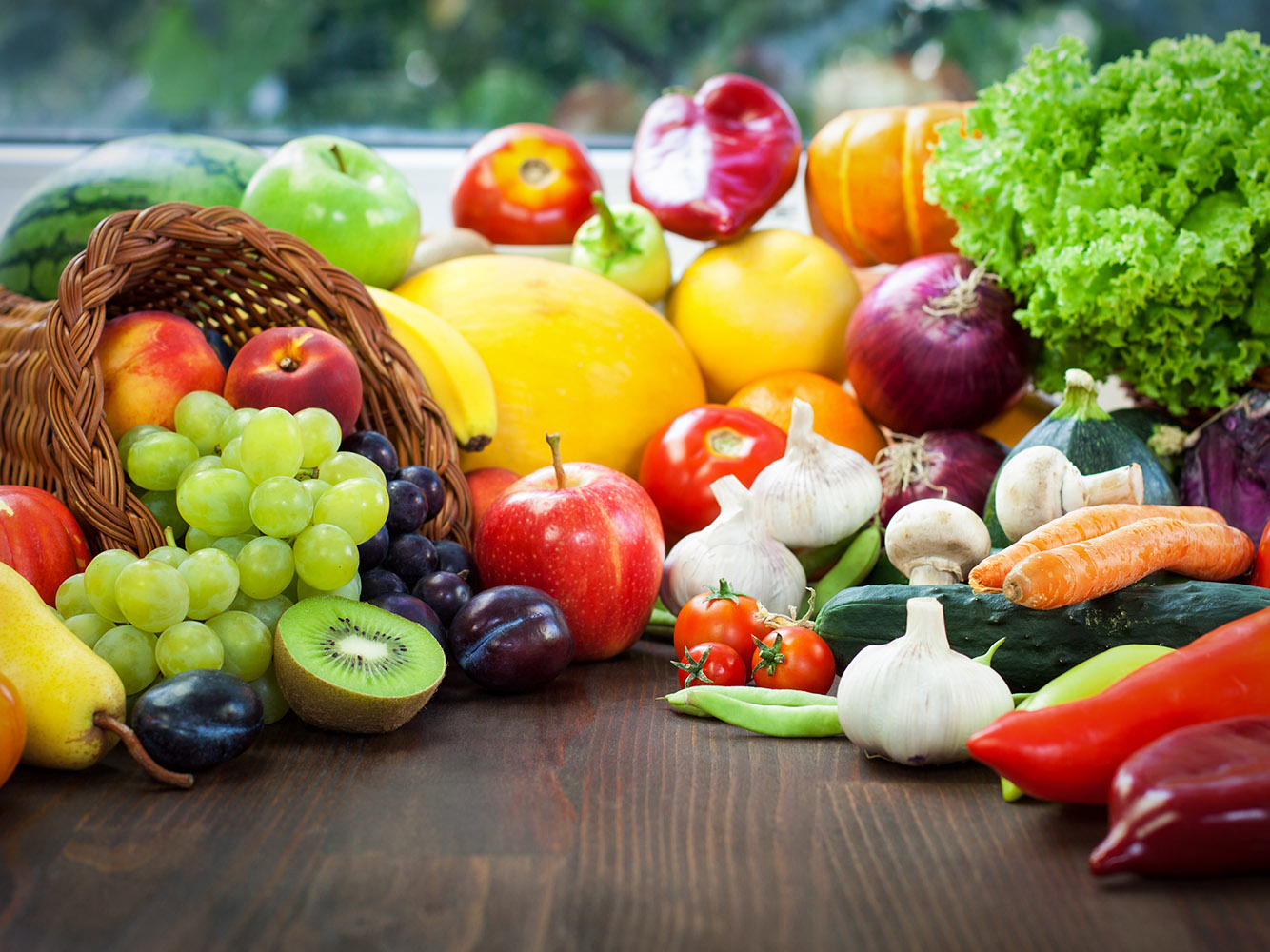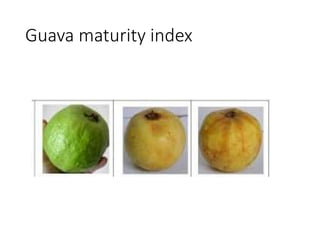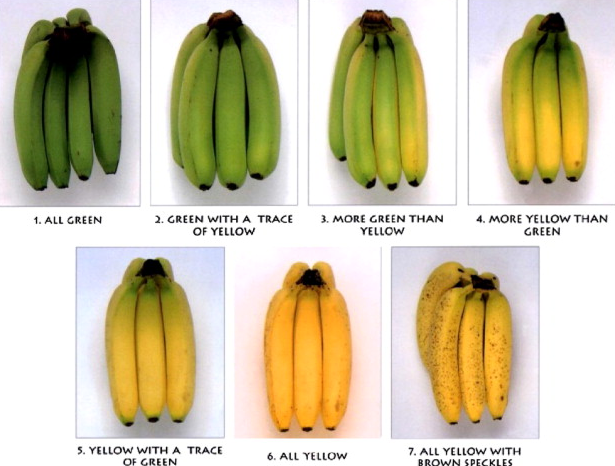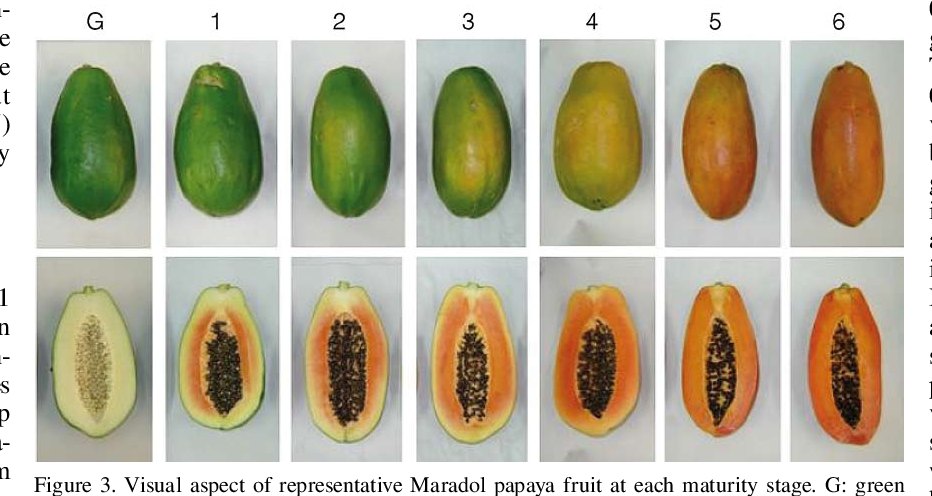 |
| https://www.scholastic.com/content/dam/teachers/lesson-plans/17-18/harvest-prints-lesson-plan-4-3.jpg |
INTRODUCTION
Maturity can be of two types – physiological maturity and commercial
maturity. Physiological maturity refers to the point in the development of an
organ (e.g. fruit, leaf) or organism (e.g. ornamental plant) when maximum
growth has been achieved and the organ or organism has matured to the extent
that the next development stage can be completed. In case of fruit, ripening can
be considered as the next development stage, preceding the senescence stage.
The commercial or horticultural maturity is the characteristic state of a plant
organ required by the consumer. It is concerned with the timing of the harvest
to meet particular market requirements. Commercial maturity bears little
relation to physiological maturity, and may occur at any stage during
development, maturation, ripening or senescence. Examples of commercial
maturity include bean sprouts (during early stage of development), cucumber
(during maturation) and tomato (during ripening). Chilli can be harvested
(commercially mature) at ‘green stage’ of fruit for ‘green chilli’ market and at
‘red ripe’ stage for drying to be used as spice. At both these stages, chilli fruits
are commercially or horticulturally mature. The term ‘immaturity’, ‘optimum
maturity’ and ‘over maturity’ can be related to these market requirements. To
a green chilli market, a red ripe chilli is ‘over mature’ and to the red ripe chilli
market green chilli is ‘immature’.
Maturity Indices of Commercially Important Fruits:
| https://encrypted-tbn0.gstatic.com/images?q=tbn:ANd9GcQiG8soPVnq9ZwAhqkqvXI0LK_7rizbSibInPKO_ DMB8caMvlqG_e_3x02IQecdOjRUaR8&usqp=CAU |
The fruits are generally harvested when the changes in rind colour take place. The colour break stage (change in colour from green to yellow) is taken as criterion for judging the maturity of lime and lemon. In citrus, total soluble solid (TSS): acid ratio is considered to be a good index for judging maturity, which varies from variety to variety.
The fruits are usually harvested when the surface colour is between colour break and quarter yellow for shipment by sea and a half to three-quarter yellow colour for transportation by air. Harvesting for local market and distant market should be done at the full maturity stage and 75-80 per cent maturity stage, respectively. At maturity, the eyelets get flattened.
In grapes, the basal berries mature and ripen first and the harvesting of immature berries are never advisable as these do not ripen after harvest. The physical appearance like change in colour from dark green to light green, yellow or red or purple depending upon the type of cultivars, glossyness and softness of berries are also taken as indices for judging maturity. The estimation of TSS: acid ratio is also taken as criteria for judging the maturity. The TSS and acidity of berries are determined by refractometer and titration, respectively.
In sapota, various criteria have been suggested for judging the maturity e.g. development of a dull orange colour or potato colour, showing light yellow streak instead of a green streak when scratched and disappearance of browny scales on the fruit surface.
8. Guava:
 |
| https://image.slidesharecdn.com/maturityindices-191121110554/85/maturity-indices-for-harvesting-fruits-45-320.jpg?cb=1574334602 |
Guava fruits mature 4-5 months after flowering. At maturity the specific gravity varies from 0.95-0.96, while TSS and acid content ranges from 12-13° Brix and 0.36 to 0.41% respectively.
The fruits are ready for harvest in 5-6 months after flowering. The fruits are picked when the skin turn slightly yellow and the fruit gives a metallic sound when tapped. Likewise, the ripe fruits give a distinct cracking sound of grain cracking when pressed slightly on the slices.
12. Pear:
Pear is harvested when firm and green for canning, while fully mature fruits
are harvested for fresh consumption. Days from full flowering, TSS and
firmness can also be used for judging the maturity.
Various criteria have been advised for judging the maturity of peaches like fruit size, shape, firmness, starch content of fruits etc. Usually peaches are picked when they are still hard as they can ripen well in storage or in transit.
| https://encrypted-tbn0.gstatic.com/images?q=tbn:ANd9GcS4YEt_KjM9LHLJSxiVso_SnL45bBWRdqkUTUG0tIBlThejsit8zOy64JfEIxJszG7n5 _s&usqp=CAU |
Maturity Indices of Commercially Important Vegetables :
Stage of maturity is determined by curd size and its compactness. If harvesting is delayed, the curds become loose and discoloured. If the produce is meant for storage, it is better to harvest when the curds are not fully exposed and still covered with central whorl of leaves.
| https://encrypted-tbn0.gstatic.com/images?q=tbn:ANd9GcTi8JUPblfbIDCc2UV7mw2jHBdnPlmFK01yMA&usqp=CAU |
Solidity and firmness of the heads are the usual maturity characteristics used. Colour of the head is used as an added index. The head turns a lighter shade of green when full development is attained.
Generally, celery requires blanching, although some growers prefer to sell it green. There is no specific time of harvest for celery though some like to harvest it as early as possible to take advantage of higher price. Blanching of the petioles and stalks and slight enlargement of the heart and inner leaves are used as picking indices.
Depending on the variety, the attainment of desired size is the primary consideration. Marketing of roots begins as soon as they attain acceptable size even though they have not attained full size specific to the variety. The roots must be harvested before emergence of the seed stalk.
| http://plantsinaction.science.uq.edu.au/sites/plantsinaction.science.uq.edu.au/files/sites/ plantsinaction.science.uq.edu.au/files/Picture11.0.png |
Setting of skin, starch content and leaf senescence are harvest indices. To catch early market and to get high price, potatoes are also harvested before attaining full maturity. These tubers are not fit for storage and should be disposed of quickly.
Onions are harvested depending upon the purpose for which the crop is grown. It requires 45 to 90 days from field setting for green onions and 90 to 150 days for bulb depending upon the variety. Onions should be harvested one week after 50% crop shows neck fall. Garlic is ready for harvesting when the tops turn yellowish or brownish and show signs of drying up and bend over.
Fruits are harvested when they are tender and exhibiting maximum growth rate. At this stage, the blossom end of the fruits, when bent, breaks easily. It takes 7 to 8 days to become ready for harvesting after fruit set. Frequent picking promotes fruit development and increases yield.
The crop matures in 3 to 4 weeks in case of quick growing varieties and in 8 to 10 weeks in case of the Chinese varieties. The crop is harvested when the roots are still tender before they become pithy and fibrous.
References:
1. Kader, A.A. (ed.) (1992) Post-harvest Technology of Horticultural Crops
(2nd edition), University of California, Berkley.
2. Thompson, A.K. (2003) Fruits and Vegetables: Harvesting Handling and
Storage, Blackwell Publishing, UK.
3. Watada, A.E., Herner, R.C., Kader, A., Romani, R.J. and Staby, G.L.
(1984) Terminology for the description of Developmental stages of
horticultural Corpp. Hort. Science, 19: 20-21.
4. Wills, R., McGlasson, B., Graham, D. and Joyce, D. (2004) Post-harvest
(4th edition), CAB International, U.K.










